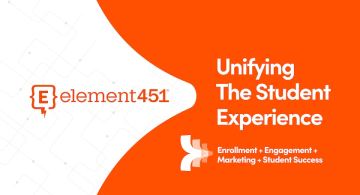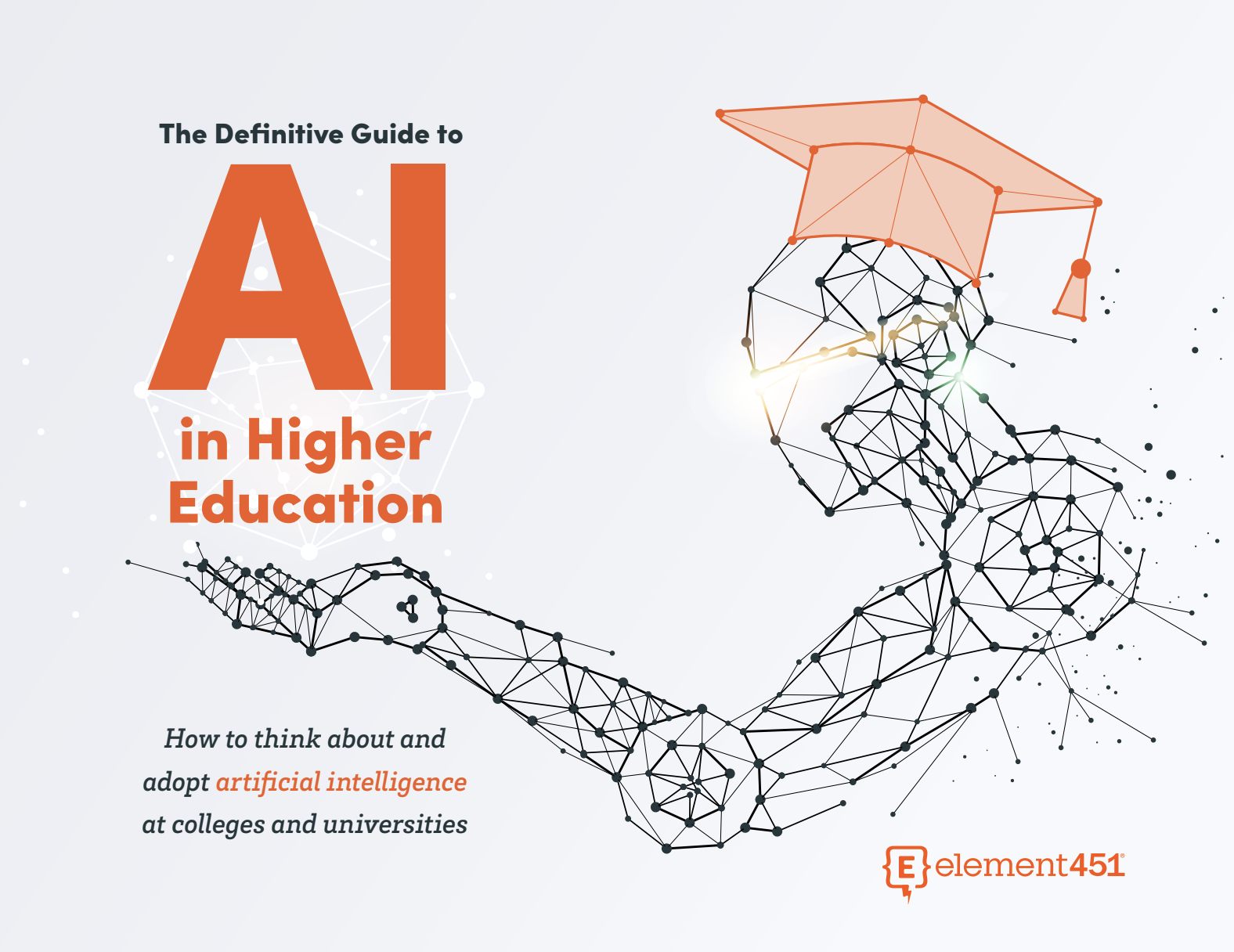10 Digital Marketing Strategies in Higher Education
by Erin Fields · Updated Dec 22, 2024
Marketing trends can change at a surprisingly quick pace, and if you’re working to reach prospective students who recognize the good from the bad, you’ve got to keep up.

Introduction
To create the most effective marketing campaigns, your marketing team must consider factors like your university mission statement, target audience, and leading web and social channels. A solid strategy combines these elements into one cohesive plan to deliver timely messages to the right people.
In this post, we’ll spotlight the top higher education digital marketing strategies you should know about. These digital marketing trends are relevant as you improve student engagement, strategize student recruitment, and consider the culture and progress of campus life.
Top 10 Digital Marketing Strategies to Use in Higher Education
In higher education, marketing trends can direct your steps in a number of ways. From nurturing relationships with current students, to hosting events, to combatting declining enrollment, you can use modern tools to your advantage.
Not sure where to start? We’ve done the heavy lifting for you. In the list that follows, you’ll find the emerging higher ed marketing to focus on. Then, you can start to envision how to use these digital marketing techniques at your own college or university.
1. Authentic university branding
Higher education faces many unique challenges in the months to come—including post-pandemic enrollment battles and unpredictable economic factors. Students are looking for clear and honest reasons to apply and stay at particular higher education institutions, which means that a school’s brand messaging must be genuine.
In particular, Gen Z students are are savvy consumers. They may be more likely to abandon enrollment efforts if they detect that a school’s brand isn’t absolutely authentic to their own core values. This particular cohort has even more access to social sharing, digital information, and brand research than they did years ago.
Education marketers should focus on honest brand messaging that promotes realistic outcomes to new students. Similarly, colleges and universities should aim to promote any social or cultural initiatives that help strengthen a school’s brand and reputation.
2. Video marketing
Video marketing has remained one of the most effective ways to capture the attention of prospective students and convey your institution’s value proposition. By creating engaging and informative videos, universities can showcase campus life, academic programs, and student testimonials, providing an immersive experience for potential applicants.
3. Pay-per-click advertising
Pay-per-click (PPC) advertising is one of the best digital marketing strategies for universities. When implemented and monitored well, especially for less well-known higher education institutions, it can be a game changer. By targeting specific keywords and demographics, institutions can increase their visibility and attract more qualified leads.
4. Student-focused blogging
You might hear some marketers saying that blogging (as an aspect of content marketing) is a thing of the past, but we don’t think that’s a hard and fast rule.
What is true, however, is that blogging for the sake of publishing content (without a focus on creating student-centered content) is a big mistake.
It’s time to deliver student-centered content that helps future applicants feel at home. Not only are these blogs and content pieces more attractive (and clickable), but they also generate more return on investment when you’re tasked with goals like increasing enrollment.
Whether you incorporate guest blogs (inviting special authors to contribute to your online space) or spotlight current students individually, make your blog a place where the student experience is a key part.
5. SEO and content marketing
Search engine optimization (SEO) is crucial for improving your institution’s online visibility, but it works best when paired with a robust content marketing strategy. By producing high-quality, relevant content—such as blog posts, videos, infographics, and guides—universities can attract organic traffic and engage prospective students.
Content marketing allows institutions to showcase their expertise, highlight campus life, and address common student concerns. When optimized with the right keywords and structured to answer prospective students' questions, this content not only boosts search rankings but also builds trust and credibility. Schools that invest in consistent, value-driven content marketing are better positioned to capture student interest and influence enrollment decisions.
6. Email campaigns
Email marketing remains one of the most effective tools for engaging prospective students, nurturing leads, and keeping current students and alumni informed. By crafting personalized and targeted email campaigns, institutions can deliver valuable information at the right time, guiding prospective students through the admissions process.
Successful email campaigns often include segmentation based on demographics, interests, or application status, ensuring messages resonate with the recipient’s specific needs. For example, prospective students might receive tailored information about campus tours, financial aid opportunities, or deadlines, while admitted students could be sent resources on orientation or housing.
Dynamic content, such as videos, testimonials, or calls to action, can further increase engagement rates. When integrated with analytics, email campaigns also provide valuable insights into student behavior, helping institutions refine their strategies for maximum impact.
7. Short form video (embedded on website)
We’ve already looked at the benefits and popularity of short form social media platforms like TikTok. Next, we’ll focus on how you can incorporate the same beneficial short-form video presentations onto your school’s website.
Alongside your digital or website team, brainstorm how you can display short videos (under 90 seconds) onto your homepage or other high-converting pages. Creative ideas can include:
- Short student interviews
- Insight from academic leaders or professors
- Campus and facilities tours
- Sports and social highlights
What’s the benefit of using video segments in this way? These elements make your site more interactive, visually appealing, and convincing.
8. Higher education podcasts
Podcasts are another growing brand trend that colleges and universities can incorporate. There are now over 3 million podcasts in over 100 different languages, and listenership numbers are continually up.
Producing and releasing a podcast has a low barrier to entry, allowing anyone to get started. Costs can be minimal, and most of the production work can be performed in-house.
If you’re interested in capturing a new segment of the market through podcasting, make sure you’re using a personalized, student-centric approach. It’s a good idea to poll students or college data about which topics are most relevant or helpful. This will allow you to produce highly focused, practical shows and episodes that drive your marketing forward.
9. Campus or student ambassadors
Campus ambassadors are appointed students who represent the main values of your school or campus culture. Ambassadors can be empowered to recruit new students, lead events, or drive PR initiatives for your school.
Because this tactic provides a “human” touch to your messaging, campus ambassadors are an effective way to reach new students and build avenues for trust.
Many larger schools (or those with the right marketing budget) can even recruit third-party ambassadors to represent the school to the broader public. This might involve former graduates who hold significant titles or who have platforms in key industries. Make sure that any appointed representative wholly represents the values of your campus.
10. Voice search optimization and mobility
Many marketing teams are already taking advantage of search engine optimization (SEO), but did you know that voice search optimization is one of the latest trends?
Voice search refers to smart voice technology (like phones and speakers) that receive audible messages to perform online searches. For example, a prospect might ask, “What university has the best engineering program in my state?” Voice search will pick up and recall a result based on a rapid internet search.
To improve voice search optimization and rankings, you should make sure that your entire website is mobile-compatible and optimized for different types of devices. Then, use highly searchable pages (like FAQs) to break the content down into conversational topics and responses. This work behind the scenes can help voice tools detect and share your website more frequently.
Digital Marketing Trends in Higher Education
Personalization and AI in marketing
Embracing personalization and AI in marketing strategies allows institutions to deliver tailored content and experiences to prospective students. By leveraging data and AI technologies, universities can create more engaging and effective marketing campaigns.
Mobile-first strategies
With the majority of students and parents accessing information via mobile devices, adopting mobile-first strategies is crucial. Ensuring that your institution’s website and digital content are optimized for mobile use enhances user experience and engagement.
Virtual events and webinars
Hosting virtual events and webinars provides opportunities for institutions to connect with prospective students regardless of geographical limitations. These platforms allow for interactive engagement and can showcase various aspects of campus life and academic programs.
Data-driven decision making
Utilizing data analytics enables institutions to make informed decisions regarding their marketing strategies. By analyzing metrics and trends, universities can optimize their efforts to better reach and engage their target audiences.
Can a CRM improve your marketing strategy?
Choosing the right software or platform is one way to take your college or university marketing to the next level. Not only does the right platform allow you to personalize the student journey, but you can put people at the very center of your marketing initiatives.
At Element451, we specialize in this very strategy. Whether you need prospect nurturing, automatic messaging, or personalized follow-up to improve conversion rates, we’ve got the secret sauce to get your campus growing.
Not only can you take advantage of the latest trends in higher education marketing, but you’ll do so with the latest CRM features and tools right at your fingertips. It’s a winning combination for both you and your students.
Elevate Your Institution’s Digital Marketing with Element451
Alignment means delivering the right messages, to the right people, at the right time. If you’re focused on growing your college marketing efforts this year, don’t miss the trends that matter the most to prospective students and families.
Learn how the right CRM platform can help you capitalize on the latest higher education marketing best practices.
Frequently Asked Questions
What is the cost of implementing digital marketing in higher education?
The cost varies depending on the strategies and tools used, but most institutions spend between 5-10% of their overall budget on marketing efforts.
What is the role of AI in digital marketing for universities?
AI enhances digital marketing by personalizing student outreach, analyzing data for actionable insights, and automating tasks like email campaigns and content recommendations.

About Element451
Boost enrollment, improve engagement, and support students with an AI workforce built for higher ed. Element451 makes personalization scalable and success repeatable.
Categories
New Blog Posts

The Definitive Guide
AI in Higher Education
Bridge the gap between the latest tech advancements and your institution's success.
Useful Links
Related Articles

Talk With Us
Element451 is the only AI Workforce Platform for higher education. Our friendly experts are here to help you explore how Element451 can improve outcomes for your school.
Get a Demo








